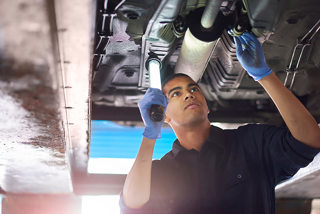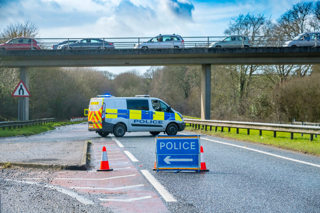The car driving test pass rate for January to March 2022 was 47.1%, down from 48.1% in the previous quarter.
Between April 2021 and March 2022, car driving tests were failed 786,400 times, new data from the Department for Transport (DfT) reveals.
DVSA research shows that driving examiners had to physically intervene in 168,583 tests during that time to avoid a dangerous incident.
This means driving examiners had to do things such as brake or steer the car in one in five failed tests.
To provide support for learner drivers, the Driver and Vehicle Standards Agency (DVSA) has recently launched the ‘Ready to Pass?’ campaign at www.gov.uk/ready-to-pass.
It aims to improve pass rates, which will help to reduce the waiting times for tests.
The campaign gives learner drivers advice on: finding an approved driving instructor; monitoring and checking progress of their driving lessons and private practice; and when to take a mock test.
It also gives advice on how to manage test-day nerves - one in 10 learners who fail their driving test say the main reason they failed was because they were too nervous.
The website also includes a checklist of the things learner drivers should consider when they and their driving instructor agree they’re ready to take the test.
DVSA is asking learner drivers to move their test back if they are not ready, so their appointment can be used by someone else who is ready. They can do this free of charge up to 3 full working days before their test.
Increasing the number of driving tests
DVSA has taken action to increase test availability. The latest statistics show that 425,887 car driving tests were carried out between 1 January and 31 March 2022 (up 14% compared to the same period in 2020).
Since April 2021, DVSA has created about 428,000 more test appointments than are normally available, which has been helped by recruiting new driving examiners - creating an estimated 140,000 extra appointments – and carrying out overtime, including at weekends and on public holidays – creating a further 135,000 extra appointments.
Loveday Ryder, DVSA chief executive, said: “We took swift action to tackle the impact of the pandemic and ensure as many people as possible could take their driving test.
“I’m glad to see the action we took – along with the hard work of driving instructors and our driving examiners – is working, and more test slots are available for learner drivers.
“However, with less than half of learners passing, I’d urge them to use our Ready to Pass? checklist to make sure they’re ready – and delay their test if they’re not. This will help make more tests available and prevent people having to pay to re-test.”
RAC head of roads policy Nicholas Lyes says that, while it’s good to see the number of practical car driving tests now back to pre-pandemic levels, there is still a backlog of learners who are no doubt eager to pass their tests and get on the road unsupervised for the very first time.
“Unfortunately though, an FOI made by the RAC to DVSA reveals the average waiting time in March this year was around 14 weeks – or just over three months – which is too long, especially for those who need a car to get to work,” he added.
“While we know the DVSA has measures in place to increase the number of practical tests, we really need to see numbers increase beyond pre-pandemic levels in order to bring down overall waiting times.”






















Login to comment
Comments
No comments have been made yet.